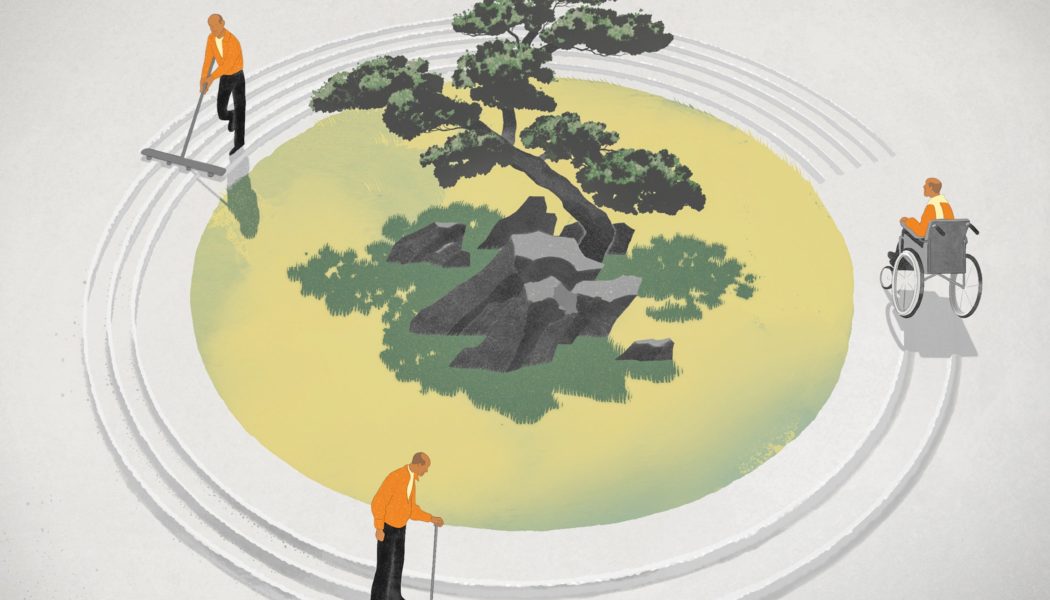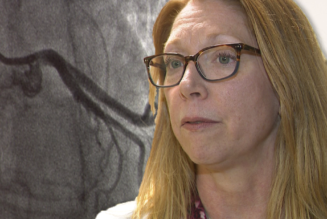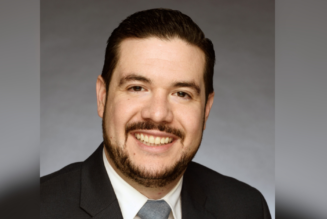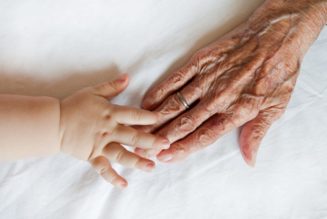How to Die in Good Health
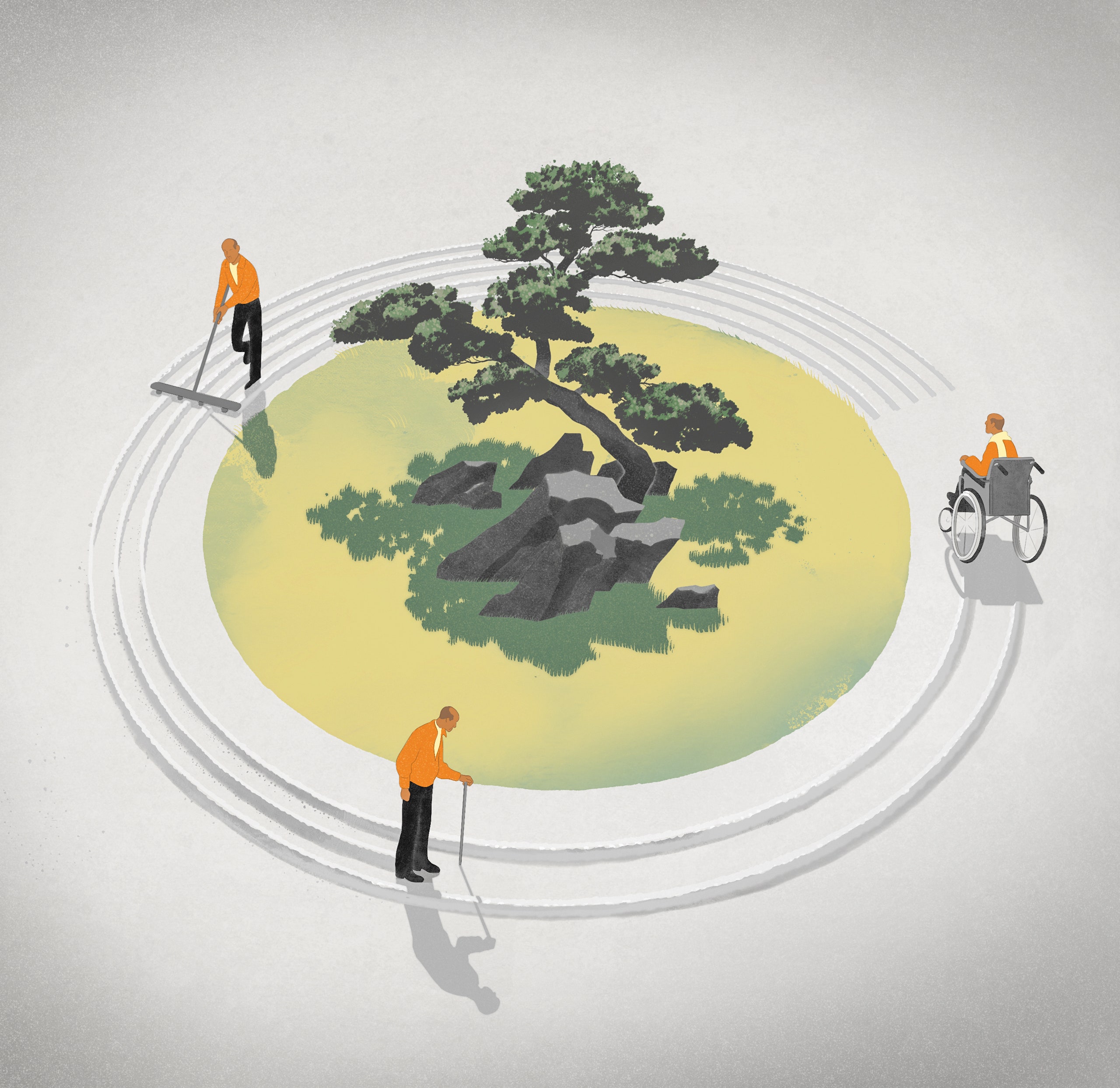
Some of my earliest memories are of summers with my grandparents, in New Delhi. I spent long, scorching months drinking lassi, playing cricket, and helping my grandparents find ripe mangoes at roadside markets. Then I’d return to the U.S., my English rusty from disuse, and go months or years without seeing them. At some point, my India trips started to feel like snapshots of loss. My grandfathers died suddenly, probably of heart attacks. My Biji, my father’s mother, fell and broke her hip in her seventies, and she spent her last years moving back and forth between her bed and her couch. My Nani, my mother’s mother, developed excruciating arthritis in both knees; in order for her to leave her fifth-floor walkup, my uncle practically had to carry her down the stairs. I have always wondered whether their fading vitality—the way their worlds contracted and their possibilities vanished—was an inevitability of aging or something that could have been averted.
Many of us have come to expect that our bodies and minds will deteriorate in our final years—that we may die feeble, either dependent or alone. Paradoxically, this outcome is a kind of success. For most of history, humans didn’t live long enough to confront the ailments of old age. In 1900, a baby born in the U.S. could expect to live just forty-seven years, and one in five died before the age of ten. But twentieth-century victories against infectious diseases—in the form of sanitation, antibiotics, and vaccines—dramatically extended life spans, and today the average newborn lives to around seventy-seven. Lately, though, progress has slowed. In the past six decades, medicine has added about seven years to the average life span—less by saving young lives than by extending old ones, and often in states of ill health. In many cases, we’re prolonging the time it takes to die.
A growing number of celebrity doctors, futurists, and so-called biohackers now argue that it doesn’t have to be this way. There are, by some estimates, hundreds of specialized “longevity clinics”—including some that charge six-figure annual fees—which claim to offer more of the world’s most valuable commodity: years of healthy life. Perhaps the most prominent longevity evangelist is Peter Attia, the author, with Bill Gifford, of the best-selling book “Outlive: The Science and Art of Longevity.” Through his telemedicine practice in Austin, Texas, for an undisclosed price, Attia offers health advice, diagnostic tests, exercise protocols, and supplements to a wealthy and exclusive clientele. He also interviews an eclectic mix of scientists, doctors, and entrepreneurs for a popular podcast, “The Drive.” Oprah has interviewed him; Hugh Jackman and Gwyneth Paltrow follow his regimens.
Attia graduated from medical school and trained to be a surgeon, but grew disillusioned during residency and dropped out. He became a consultant for McKinsey instead, and then worked for an energy company. Finally, in his mid-thirties, a fixation with his own health brought him back to medicine. As a new father, he learned that he was prediabetic, and he reflected on men in his family who’d died early, of heart disease. In his book, he describes his former physique as “sausage-like”; on a beach one day, his wife told him, “Peter, I think you should work on being a little less not thin.” Soon, he was “down the rabbit hole of complete physical optimization.”
Attia, now fifty-one, has become convinced that science, technology, and targeted work can solve a uniquely modern problem: the “marginal decade” at the end of our lives, when medicine keeps us alive but our independence and capacities bleed away. It’s a scandal, in his view, that our life span has grown so much more than our health span. Many of Attia’s prescriptions are obvious: work out, eat healthily, sleep well, nurture relationships. (The Harvard Study of Adult Development has found, in eight decades, that human connections may be the single most critical determinant of long-term happiness and health.) But Attia often extrapolates from scientific data to offer jarringly intense and specific advice. Want to be able to lift a grandchild when you’re eighty? Goblet squat fifty-five pounds when you’re forty. Hope to lift yourself off the floor unassisted in old age? Try “toe yoga.” Attia notes that each decade after thirty we lose a meaningful amount of muscle mass and cardiovascular fitness. If we wish to slow that decline, and to complete a “Centenarian Decathlon” of important late-in-life activities—carry groceries, climb stairs, have sex—we need to become “athletes of life.”
The increasing obsession with longevity has inspired a backlash. Many in the life-extension movement are quacks or hacks who peddle pills, potions, and false promises; longevity skeptics tend to see the loss of our capacities as something to accept, not avoid. Ezekiel Emanuel, an oncologist and a health-policy professor at the University of Pennsylvania, derides Attia as an “American immortal” who overcomplicates straightforward advice. “The idea that you’re going to get another healthy decade of life just by doing the things he says is hocus-pocus,” Emanuel, who served as a special adviser to the Obama Administration, told me. “No one’s got that evidence.” Half an hour of daily exercise clearly improves and extends lives, but it’s hard to prove that Attia’s intensive regimens are much more beneficial. By incessantly preparing for the future, the skeptics say, we mistake a long life for a worthwhile one.
On a recent afternoon, I chased my three-year-old daughter around the playground for an hour. When we returned home, she spread a jigsaw puzzle out on the floor and looked up expectantly. I liked the idea of sitting still, but my knees hurt and my back was tense. I had to transfer the puzzle to a grownup table and sit my daughter in a booster seat. She didn’t seem to mind, but I remember that day as the first time that my physical limits noticeably constrained what we could do together. Longevity has become a concrete problem, just as it was for my grandparents: I wake up with aches in long-ignored joints and tendons; I calculate, with dismay, the age I’ll be when my children graduate from college or start their own families. One day, we’re going to die. What should that mean for how we live today?
In 1980, James Fries, a Stanford rheumatologist, predicted in The New England Journal of Medicine that better medicines and behaviors would soon enable a “compression of morbidity,” which would delay disease and debility until the very end of our lives. In the late nineties, Fries supported his hypothesis by publishing a decades-long study. University of Pennsylvania graduates who, in their forties, exercised more, weighed less, and didn’t smoke much were half as likely as others to suffer a significant disability in their seventies; they seemed to postpone the onset of disability by more than five years. But the alumni of an élite college may not have been representative. Fries died of end-stage dementia in 2021, at the age of eighty-three, and his broader prediction never seemed to come true. If anything, longer lives now appear to include more difficult years. The “compression of morbidity may be as illusory as immortality,” two demographers, Eileen Crimmins and Hiram Beltrán-Sánchez, wrote in 2010. According to the World Health Organization, the average American can expect just one healthy birthday after the age of sixty-five. (Health spans are greater in countries such as Switzerland, Japan, Panama, Turkey, and Sri Lanka.)
Earlier this year, I flew to Austin to hear Attia’s thoughts about how to change that. When my Uber pulled into his driveway, he was finishing his morning workout, so an assistant led me inside, where I spent a few moments looking at Formula 1 paraphernalia. Floor-to-ceiling windows overlooked lush hills, and a herd of life-size elk and deer models stood in the sun. I would soon learn that they served as targets for archery practice.
Attia has a shaved head, a sharp nose, and a stubbled chin, which make him look like a mix of Stanley Tucci and Jeff Bezos. When he appeared, he was wearing a fitted T-shirt that emphasized his biceps. He led me to his kitchen, where he offered me coffee and mixed a brightly colored concoction for himself. “I always try to get some protein in the morning,” he said. He eats as many as six sticks of venison jerky a day.
When I asked Attia about the longevity movement, he bristled. The term “just smells of snake oil,” he said. “Most of what I see out there is what I think of as sci-fi longevity. We’re going to live to be two hundred, and death is going to become irrelevant.” He handed me my coffee. “The way I talk about it is in a very low-tech way.” Attia has said that he wouldn’t want to live forever, even if he could, and he seems wary of a stereotype of longevity doctors. At parties, he sometimes pretends he’s a race-car driver or a shepherd. “I thought I was going to get skewered for writing ‘Outlive,’ ” he told me. “I thought doctors were going to say, ‘This guy is a grifter. He doesn’t know what he’s talking about.’ ” Some do say that—but others have become his followers.
Like a consultant, Attia often explains himself using frameworks. In the time of Hippocrates, he said, there was Medicine 1.0, a pre-modern system of diagnosis and treatment based on observation, anecdote, and guesswork. In the twentieth century, Medicine 2.0 deployed the randomized controlled trial to produce scientific marvels such as dialysis, organ transplants, and antiviral drugs. But Attia also sees Medicine 2.0, arguably the type of medicine that I practice, as passive. It often acts after the onset of damage—debilitating arthritis, a broken hip—instead of aggressively and proactively warding off illness and injury. Attia preaches Medicine 3.0.
We sat down at a sort of command center in his home office. On a large monitor, Attia pulled up a patient’s “longevity risk assessment”—his team’s calculation of threats to life and limb, ranked by relative importance both now and in the future. Although Attia describes his approach as low-tech, his patients receive dozens of tests, some of them outside the medical mainstream: full-body MRIs, body-fat-composition scans, DNA analyses. He often screens for Alzheimer’s risk, something that many doctors advise against, in part because patients can’t do much about a distressing result. (While filming an episode of the longevity docuseries “Limitless,” Chris Hemsworth, the host, learned from Attia that he has a gene associated with a roughly eight-hundred-per-cent increase in Alzheimer’s risk; afterward, Hemsworth took time off from acting.)
The assessment on Attia’s monitor was for a middle-aged patient who had been given a diagnosis of attention-deficit disorder, and had also undergone several surgeries. Running down the left side of a chart was a list of conditions, starting with the ones that posed the greatest risk: emotional-health problems and physical injury. The right side showed percentages—the guesstimated chance that each condition would become an issue in the future. Cancer and neurodegenerative disease were small risks now, but they ballooned into dominant hazards later in life. “It’s more art than science,” Attia told me. “There’s no A.I. that’s ever going to be able to spit out these numbers. It requires clinical judgment.”
The patient’s results seemed to trouble Attia. “They’re on a path to have a very physically debilitated last decade of life,” he said. (His practice omitted the names of patients and asked me to change their pronouns, to protect their privacy.) Attia’s staff focussed on three near-term suggestions: see a recommended therapist, work with a recommended exercise team, get a colonoscopy. They may have been powerful in their simplicity, but they were standard enough that I wondered whether all that testing was really necessary.
Many more patients will soon receive a version of Attia’s advice. Not long ago, he débuted a program called Early, a kind of MasterClass on longevity which costs twenty-five hundred dollars to access online. In a series of slick videos, Attia—in the hybrid persona of doctor, teacher, and coach—sits in a leather chair and talks about anticipating and averting diseases. Soft music plays; one video cuts to Attia’s muscles tensing as he aims a manual crossbow and strikes a faraway target. “Hope is not a strategy,” he says later, looking into the camera. “The marginal decade is the most important decade.”
When I asked Attia what he sees as a threat to his own longevity, he spoke of a lifelong battle to keep his emotions in check. He previously described himself as a workaholic with anger-management issues. During a business trip in 2017, he received a call from his wife, who was in a state of terror: their month-old son had stopped breathing and turned blue, and didn’t have a pulse. She’d started CPR on his tiny body. By the time first responders arrived, he’d regained a heartbeat and his skin was transitioning to pink.
“Okay, call me when you get to the hospital, so I can talk to the doctors in the ICU,” Attia remembers telling her, in his book. Then he went to dinner. Ten days passed before he flew home.
“I don’t try to forgive myself for it,” Attia told me recently. “There was a really, really broken person who did those things.” He paused, as though replaying the episode in his mind. “Don’t ever forget that that bastard is out there. . . . And make sure you work really hard to keep him at bay.”
The quest for physical optimization can easily become a substitute for deeper fulfillment. A decade ago, Attia exercised twenty-eight hours a week and observed a strict ketogenic diet. His “biomarkers were out of this world,” he has said, but he refused cookies that his children baked for him and pasta during trips to Italy. “I was doing everything to live longer, despite being completely miserable emotionally,” he writes in “Outlive.” In a recent interview with the Times, Attia said that, before attending an event at his son’s kindergarten, he thought for a moment of the downsides: it would eat into his time for squats and deadlifts. “That’s costing me a little in terms of fitness,” he said. “But that’s the trade-off I wanted to make.”
Attia wouldn’t tell me how many patients he sees, or how much they pay; there has been speculation that his services cost around a hundred and fifty thousand dollars a year. One of his clients, Carl Barney, is the eighty-two-year-old founder of a nonprofit inspired by Ayn Rand. He told me that, during the past three years, Attia has encouraged him to diversify his exercise routines and sleep more. At Attia’s urging, he now scoops collagen protein powder into his morning tea, drinks bone broth before dinner, and tries to consume another hundred-plus grams of protein during the day. I asked him whether Attia’s advice was worth the high price. “I have wealth, so, for me, it’s a bargain,” he said.
Attia let me join a video call in which five telegenic members of his team discussed new patients. A primary-care doctor told the group about a patient who managed career stress by engaging in extreme sports. “If they can’t do those things, a lot of their coping mechanisms will crumble,” she said. But it is difficult to quantify the risk that an injury might incapacitate someone. “We have questions like ‘Do you wear a seat belt?’ ” the doctor said. “We don’t have questions like ‘Do you cliff-jump into the ocean?’ ”
The patient’s tests had identified hearing and vision issues; a full-body MRI showed ambiguous cysts in an internal organ. Genetic screenings suggested early-dementia risks, and the patient had recently asked the team, “Should I just quit my job right now and focus on living my life?” But a neurologist observed that the patient’s relatives had developed dementia only later in life. “This is probably going to be the most hopeful piece of news we give them,” Attia said. “We can say, clearly, no. . . . We have a lot of runway.”
I was envious that the doctors could pay so much attention to one patient. Attia had time to ask how well this person flossed—something I don’t ask my wife, let alone the patients I see in fifteen-minute increments. But the primary-care doctor made me ponder whether there was such a thing as too much attention. The patient struggled with anxiety, she said, and seemed to be looking for validation of their fitness routine. “Instead, we show them all these medical problems,” she joked. “And then we’re, like, ‘Why are they so anxious?’ ”
A few years ago, Attia started an intense fasting regimen. Some lab studies have suggested that fasting may reduce inflammation and clear the body of precancerous cells, but there is no agreed-upon “dose” for healthy fasting; Attia decided that for about two weeks each quarter he would drink only water. After losing fifteen pounds of muscle, however, he abandoned the practice. “He has always been extreme,” Steven Levitt, the University of Chicago economist and co-author of “Freakonomics,” who is a patient and a friend of Attia’s, told me. “Peter has been wrong a lot, but he changes his view when he runs into evidence that contradicts his theory.” Levitt trusts and admires Attia, but acknowledged that Attia’s fans in the longevity movement could go too far. “Followers often become more extreme than the leaders,” he told me.
Attia takes rapamycin, a drug that affects the immune system and is normally used by organ-transplant patients; the drug, which occasionally gives him mouth sores, has seemed to lengthen the lives of laboratory animals. Animal experiments are unreliable indicators of how drugs work in humans, and rapamycin is not endorsed by the Food and Drug Administration or medical societies for prolonging life. “This isn’t like a vitamin,” Eric Topol, a cardiologist and the director of the Scripps Research Translational Institute, told me. “It’s a serious drug that can potentially lower your body’s ability to fight off infections.” When I asked Attia why he has promoted the drug in his book and on his podcast, he said, “There’s a big difference between saying everyone should take rapamycin and saying, ‘I take rapamycin.’ ” He also cited a study suggesting that rapamycin bolstered immunity in elderly people.
It’s clear that Attia has prompted people to take the drug. Topol said that some of his patients had read “Outlive” and then asked him for prescriptions. “People see him as the expert, so they are going to try something if he says he’s doing it,” he told me. “His followers aren’t going to be able to detect which recommendations are firmly grounded in evidence.” Meanwhile, training dozens of hours a week might take more time than it will ever tack on; good health could even drag out some terminal illnesses. “Peter’s theory of Medicine 3.0 is that you get this long life where you’re healthy, and then you fall off a cliff,” Topol said. “It would be great if it were true. There isn’t any evidence for it.”
Emanuel, the University of Pennsylvania professor, has said that he wants to live to seventy-five. (He is sixty-six.) “Living a long time is not an end in itself,” he told me over Zoom. “If it becomes the focus of your life . . . that is one of the worst mistakes you can make.” It’s not that we shouldn’t exercise or eat well—but “everyone goes through a decline,” Emanuel said. “Spending your life worried about all these tiny things is a waste of time.”
During our video call, Emanuel walked to his bookshelf, pulled out a copy of “Outlive,” and read a line from the epilogue: “It was only after much reflection on this whole experience that I really began to understand how emotional health relates to longevity.” He slapped his palm against his forehead in a mock epiphany. “Oh, really? Longevity doesn’t matter if your life sucks? . . . I mean, come on. It’s ridiculous.”
Leon Kass, who served as the chair of the President’s Council on Bioethics under George W. Bush, has written that losing our capacities might be a kind of prerequisite to accepting our mortality: maybe the slowing of body and mind is what makes death tolerable. He quotes Michel de Montaigne, the sixteenth-century essayist. “Inasmuch as I no longer cling so hard to the good things of life when I begin to lose the use and pleasure of them, I come to view death with much less frightened eyes,” Montaigne wrote. “When we are led by Nature’s hand down a gentle and virtually imperceptible slope, bit by bit, one step at a time, she rolls us into this wretched state and makes us familiar with it.”
Nir Barzilai, the director of the Institute for Aging Research at the Albert Einstein College of Medicine, is sometimes credited with discovering the first “longevity gene,” an unusual variation in DNA that is linked to exceptionally long life. When people ask him to define aging, however, he doesn’t talk about that, and instead tells a two-sentence story. An elderly woman turns to her husband and says, “Honey, why don’t we go upstairs and make love?” Her husband responds, “Sweetie, I cannot do both.”
For decades, Barzilai has followed hundreds of Ashkenazi Jews and examined genetic, behavioral, and environmental factors that have helped them age past ninety-five in exceptional health. Centenarians die of the same things as the rest of us, but later, he told me. You might live to a hundred if you could pick your genes—picking the healthy lunch option isn’t likely to be enough. Strikingly, around half the centenarians in Barzilai’s study have been overweight; thirty per cent of the women and sixty per cent of the men have been heavy smokers. When he asked a hundred-year-old whether anyone had warned her about the harms of tobacco, she responded, “Yes, all four of the doctors who told me to stop smoking—they died.”
Attia tends to argue that individual choices matter not because they are all-powerful but because they are the power that we have. He compares healthy aging to investing in retirement: contribute what you can, whether it’s a daily walk or an extra half hour of sleep, and the benefits may compound over time. “If I’m being brutally honest, I think some people are looking for a reason not to do it because it’s hard,” he said.
He acknowledged that health, like wealth, is unequally distributed; indeed, one of the most powerful longevity “medicines” is money, which can buy people less stress, better education, safer neighborhoods, and higher-quality medical care. For this reason, Emanuel argues that doctors should focus less on “getting rich people from ninety to a hundred” than on improving health in communities where people die young. When I asked Attia whether his practice might perpetuate this divide, he told me, “I’ve never concerned myself with that. I don’t think it’s unimportant, but it’s absolutely not a problem I’m interested in addressing.” He pointed out that his podcast is free and his book costs less than twenty dollars.
Attia has a term for his unproven ideas: evidence-informed medicine, or interventions that rest more on theory than on randomized controlled trials in humans. In his view, medical recommendations are often too conservative; in some cases, rigorous studies would not only take too long but also be unethical or impractical. (Try randomly assigning babies to ketogenic diets at birth.) According to Attia, medicine’s admonition to do no harm is “sanctimonious bullshit” that steers doctors toward passivity and resignation. But this line of reasoning leaves enormous room for extrapolation, and could be used to justify almost any practice.
Talking to Attia, I frequently reminded myself that I can’t diet and exercise my way out of many diseases, and there’s no regimen to eradicate uncertainty. Still, I felt the pull of becoming an “athlete of life.” Too often, conversations about life extension devolve into unhelpful abstractions and untestable speculation; one appeal of Attia’s advice is that it’s so tangible. Critics can paint his counsel as blindingly obvious or needlessly complex—but he has, at least, inspired large audiences to imagine what a better approach to aging could look like. “There is actually no such thing as atheism,” David Foster Wallace once said. “The only choice we get is what to worship.” In a society that chases money, power, fame, and beauty, there are worse gods than longevity.
Attia is a history buff and an avid rucker, which means that he likes to lug a heavy rucksack on long walks. In June, to mark the eightieth anniversary of D Day, Attia plans to set out from Utah Beach, in Normandy, with four friends, carrying supplies plus a twenty-five-pound weight, just because. They hope to trek eighty kilometres through the night and arrive at Omaha Beach less than twenty hours later.
During my visit, Attia agreed to take me on a gentler ruck, in the hills around his neighborhood. We had lunch delivered beforehand; he had a salad with chicken, nuts, and balsamic vinegar, while I had a saucy pasta. I caught him glancing at my bowl and imagined him judging my macronutrients. Then I changed into my workout gear and met him in his garage, where he outfitted me with an Army-green rucksack. “I generally recommend that people new to rucking start light,” he said, and slipped a thirty-pound weight plate into my bag. He added a few to his own, and we set out into the afternoon sun.
After climbing a hill, we entered a clearing. Around us, a circle of oak trees stretched majestically into the air. A mild breeze cooled the sweat on my brow, and a flock of birds darted across the open sky. I considered stopping to look around, but I could hear the weights in Attia’s rucksack clanging like a metronome, so I sped up. I was feeling pretty good; I made a mental note to offer to take one of his plates. I changed my mind after the next hill, when my neck stiffened and my shoulders started to hurt.
“Why not just go for a hike?” I asked, panting.
“I wouldn’t find that as fun,” he said. “Plus, it’s not as good for your trunk.”
In the distance, a school bus drove by. I envisioned myself lifting my hypothetical granddaughter one day, then adjusted my rucksack and straightened my posture.
As we walked on, I thought about a curious body of psychological research, which suggests that as we age and lose our capacities we tend to grow more content, not less. This finding clashes with popular conceptions of getting older, but seems to hold across continents, cultures, and eras. “I can’t do everything I used to,” a family friend, who is in his eighties and has been married for sixty years, recently told me. “But I wouldn’t say I’m any less happy than I was before.” Lost pleasures, he said, could sometimes be replaced: rounds of golf gave way to brisk walks, and when walking became difficult he spent more time talking to his children and grandchildren. As we grasp that our days are limited, we seem to abdicate our need for control; we may try to close the gap between what we want and what we have. Healthy aging seems to require a shift in mind-set as much as a shift in muscle mass.
My calves started to burn. I felt a knot in my back. White clouds veiled the sun, and a few ethereal rays came through. It looked so much like the entrance to TV Heaven that I half expected a deep voice to boom from above.
“Sometimes I think about all the people who’ve ever lived, and how lucky I am to be alive right now,” Attia told me. “Like, if I died tomorrow, it would be O.K.” We started down a final hill. His house came into view. “But, while I’m here, I want to know that I gave it my all,” he went on. “We have this one shot. Wouldn’t it be a shame if we didn’t make the most of it?” ♦
